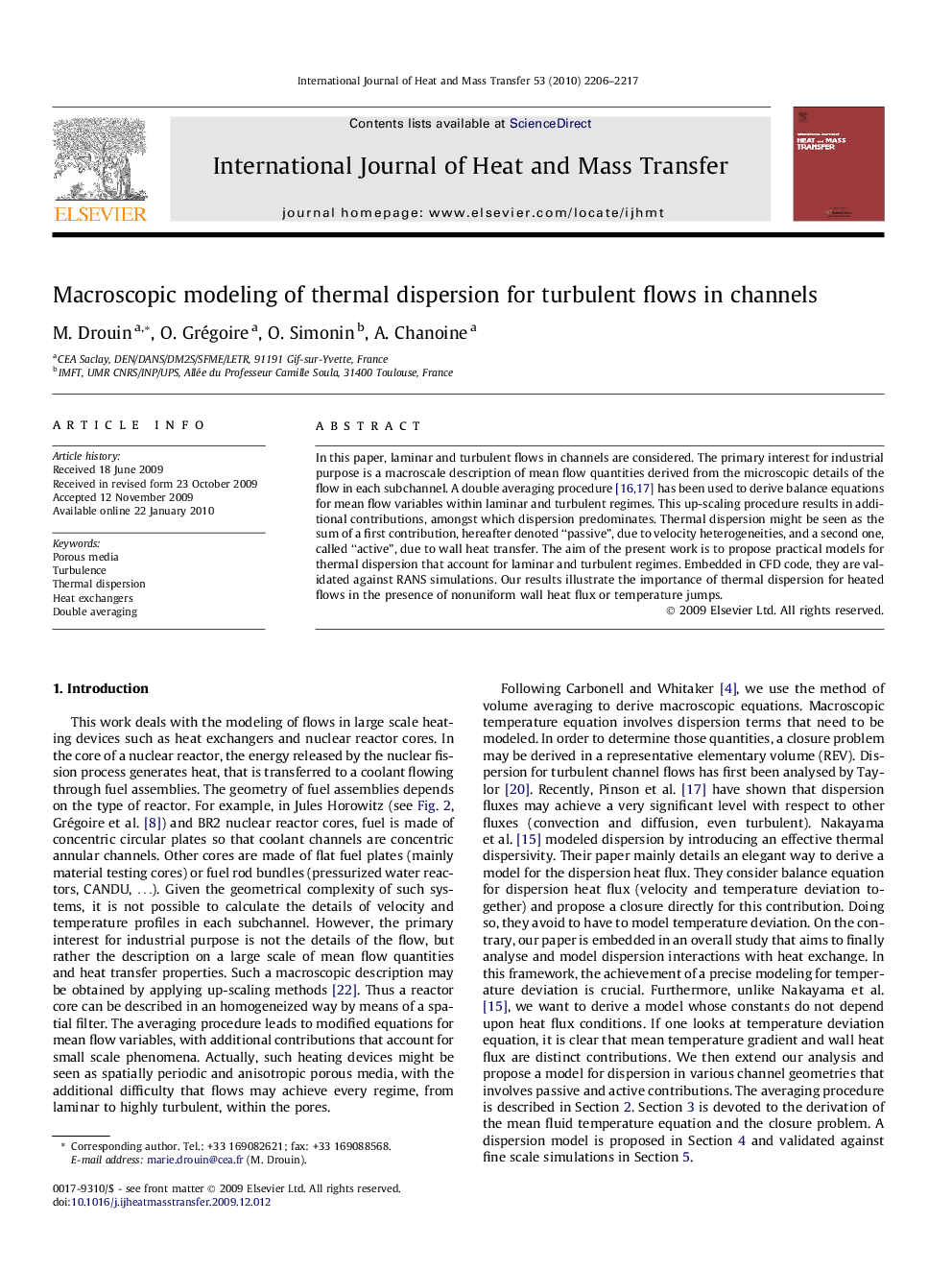| Article ID | Journal | Published Year | Pages | File Type |
|---|---|---|---|---|
| 660185 | International Journal of Heat and Mass Transfer | 2010 | 12 Pages |
Abstract
In this paper, laminar and turbulent flows in channels are considered. The primary interest for industrial purpose is a macroscale description of mean flow quantities derived from the microscopic details of the flow in each subchannel. A double averaging procedure [16,17] has been used to derive balance equations for mean flow variables within laminar and turbulent regimes. This up-scaling procedure results in additional contributions, amongst which dispersion predominates. Thermal dispersion might be seen as the sum of a first contribution, hereafter denoted “passive”, due to velocity heterogeneities, and a second one, called “active”, due to wall heat transfer. The aim of the present work is to propose practical models for thermal dispersion that account for laminar and turbulent regimes. Embedded in CFD code, they are validated against RANS simulations. Our results illustrate the importance of thermal dispersion for heated flows in the presence of nonuniform wall heat flux or temperature jumps.
Related Topics
Physical Sciences and Engineering
Chemical Engineering
Fluid Flow and Transfer Processes
Authors
M. Drouin, O. Grégoire, O. Simonin, A. Chanoine,
